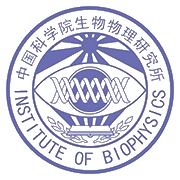Sessions 4:Geo-sciences
Michael J. Benton

Character introduction
Positions
University of Bristol: Professor of Vertebrate Palaeontology, School of Earth Sciences, 1997
University of Bristol, Head of School of Biological Sciences, 2016-8
University of Bristol, Head of Department of Earth Sciences, 2001-8
University of Bristol: Reader in the Department of Geology, 1992-1997
University of Bristol: Lecturer in the Department of Geology, 1989-1992
Lecturer, Queen's University of Belfast, 1984-9
Junior Research Fellow, Trinity College, University of Oxford, 1982-4
Research and achievements
Michael Benton has, at different times, been Head of the School of Earth Sciences and the School of Biological Sciences at Bristol. He founded the MSc in Palaeobiology at Bristol in 1996, and it has since graduated over 400 students. He has supervised over 70 PhD students. He is author of hundreds of papers on dinosaurs and mass extinctions, and numerous books, including his latest, ‘The Dinosaurs Rediscovered: How a Scientific Revolution is Rewriting History’ (Thames & Hudson, 2019). He was made FRS in 2014.
Awards, honours and distinctions
Fellow of the Royal Society (FRS), 2014
President, Palaeontological Association, 2012-4
Einstein Professor, IVPP, Chinese Academy of Sciences, 2012
President, International Palaeontological Association, 2010-4
Bass Distinguished Visiting Scholar, Yale University, 2009
Fellow of the Royal Society of Edinburgh (FRSE). 2008
T. Neville George Medal, Geological Society of Glasgow, 2006
Lyell Medal, Geological Society of London, 2005
Lyell Fund, Geological Society of London, 1992
University of Bristol: Professor of Vertebrate Palaeontology, School of Earth Sciences, 1997
University of Bristol, Head of School of Biological Sciences, 2016-8
University of Bristol, Head of Department of Earth Sciences, 2001-8
University of Bristol: Reader in the Department of Geology, 1992-1997
University of Bristol: Lecturer in the Department of Geology, 1989-1992
Lecturer, Queen's University of Belfast, 1984-9
Junior Research Fellow, Trinity College, University of Oxford, 1982-4
Research and achievements
Michael Benton has, at different times, been Head of the School of Earth Sciences and the School of Biological Sciences at Bristol. He founded the MSc in Palaeobiology at Bristol in 1996, and it has since graduated over 400 students. He has supervised over 70 PhD students. He is author of hundreds of papers on dinosaurs and mass extinctions, and numerous books, including his latest, ‘The Dinosaurs Rediscovered: How a Scientific Revolution is Rewriting History’ (Thames & Hudson, 2019). He was made FRS in 2014.
Awards, honours and distinctions
Fellow of the Royal Society (FRS), 2014
President, Palaeontological Association, 2012-4
Einstein Professor, IVPP, Chinese Academy of Sciences, 2012
President, International Palaeontological Association, 2010-4
Bass Distinguished Visiting Scholar, Yale University, 2009
Fellow of the Royal Society of Edinburgh (FRSE). 2008
T. Neville George Medal, Geological Society of Glasgow, 2006
Lyell Medal, Geological Society of London, 2005
Lyell Fund, Geological Society of London, 1992
Topic: The Origin of Feathers
Abstract Feathers are a diagnostic character of birds, and yet new fossils show they likely originated more than 100 million years before the first birds. In fact, feathers probably occurred in all dinosaur groups, and in their cousins, the pterosaurs, as we showed in 2019. This finding confirms current knowledge of the genomic regulation of feather development. Our work stems from ten years of collaboration with Chinese colleagues, during which we set ourselves the taks of understanding fossil feathers. Our first discovery was to answer the question, ‘Will we ever know the colour of dinosaurs?’ In 2010, we were able to announce the first objective evidence for colour in a dinosaur. Using ultrastructural studies of fossil feathers, we identified melanosomes for the first time in dinosaur feathers, and these demonstrated that Sinosauropteryx had ginger and white rings down its tail. Studies of other dinosaurs identified patterns of black, white, grey, brown, and ginger. This is part of a new wave in Palaeobiology where we apply objective approaches to provide testable hypotheses, once thought impossible in the historical sciences.
Previous Bojie Fu
Next Tandong Yao








